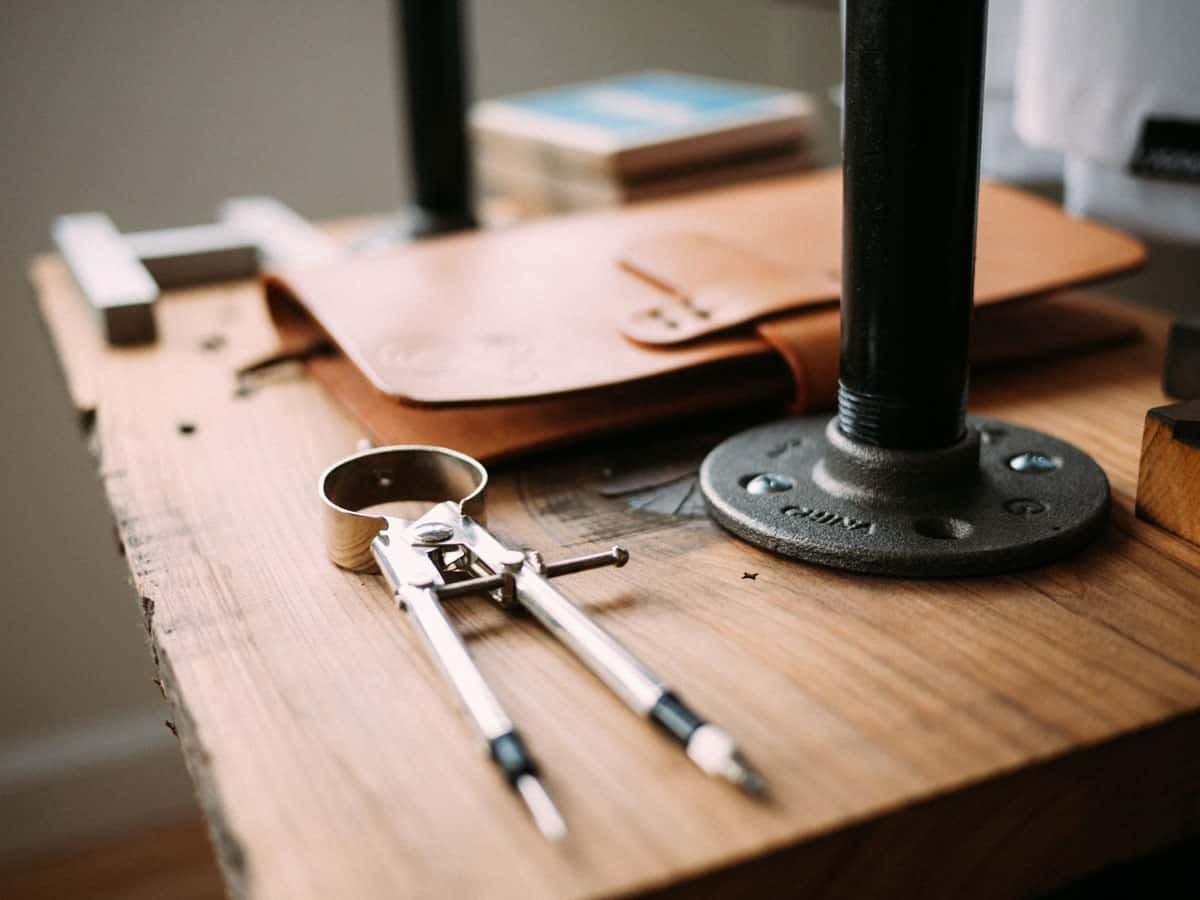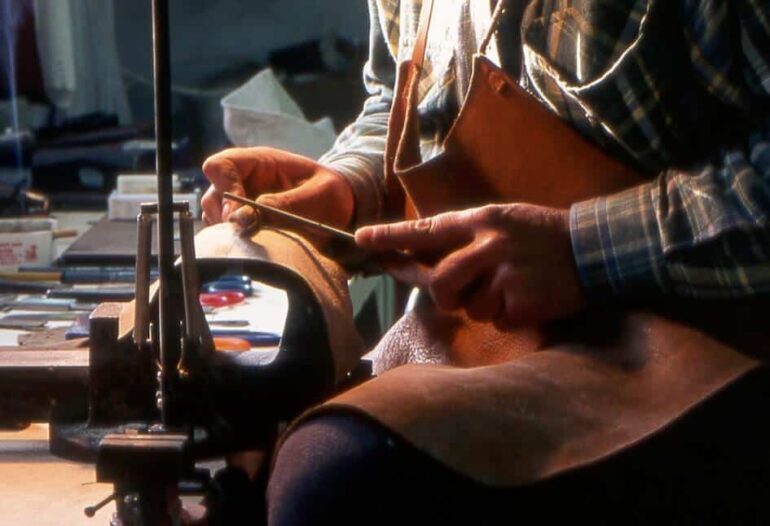The history of leather in Florence
Florence is well known as the birthplace of Renaissance art and humanist thinking but it was the economic power it wielded that made it possible for culture to flourish. At the foundations of the city’s economic success lay the “Arti” that worked kind of like unions in protecting workers and the trade secrets that would make Florentine craftsmanship (especially fabrics and leather) known throughout Europe. The Arte dei Cuoiai, or the leather-workers guild, was created in 1282 but it wasn’t until the more recent centuries that leather began to take a center stage as one of the items that embody Italian craftsmanship and design.
Italian leather style was certainly furthered by Guccio Gucci when he opened The House of Gucci in 1921 in Florence to sell leather luggage and bags as well as by Salvatore Ferragamo who started producing his famous shoes in Florence in the 1930s. Both fashion houses now have museums (and shops) in the center of town that are worth a visit.
The origins of leather production were far from glamorous. Tanning leather in medieval and Renaissance times was a seriously stinky business so it was relegated to the fringes of town along the Arno river in what is now the Santa Croce district. Tanning is the process of turning rawhide into leather and therefore a stabilized material that won’t decay. In the middle ages, this process used alum (aluminum salts) and Florence was lucky enough to control many alum mines, something that was also essential for their processing of the whole cloth that would be made into garments across Europe.
They also cultivated forests of oak in order to use the bark in the tanning vats. Other far less savory ingredients of the leather production process involved soaking the hides in vats of dog and bird feces. Yes, you read that right – you definitely didn’t want to live downwind of a tanning operation!
Today these methods are no longer used (whew) and the ancient roots of this tradition can still be seen in a more picturesque fashion in the naming of the streets around Santa Croce like Via delle Conce and Via dei Conciatori (Street of the Tanners) as well as Corso dei Tintori (street of the dyers).
Your leather buying cheat sheet to Florence

Nowadays the process of leather production is so long and varied that when it comes to buying something “authentic” it can be hard to define what that even means. Are you really looking for something that is 100% made in Italy from cow in the field to jacket in a shop? Or is it enough that something was finished and designed in Italy? This cheat sheet to terms and labels is meant to help you along the path of finding the leather item in Florence that is best for you.
Which part of the hide does the leather come from?
- Full Grain: This is considered the highest quality leather and is the part of the hide that comes from the outer part of the animal. This leather would typically show all the texture, pores and any imperfections in the skin of the animal itself.
- Top Grain: “Top grain” leather comes from the outer part of the animal hide like full grain but it can be sanded or buffed down. Like full grain, this leather is great for items that need a thicker and more textured surface like luggage and bags.
- Vero Cuoio / vero pelle / “genuine leather” : Before a hide is tanned, it is usually split horizontally into two pieces, separating the top grain (the outside of the hide) from the lower side known as split leather. What you have on your hands with vero cuoio is indeed real leather but it’s the lesser quality interior part of the hide. This is also what suede is! This can be ideal is you want a piece that is softer and more supple like certain leather garments. The problem can come in when the outside is layered in plastic film or embossed to look like it has skin texture and then sold at “full grain” prices.
- Bonded Leather/regenerated leather/recycled leather: This is like leather scraps brought back from the dead (of the assembly floor), re-assembled, pressed, packed and highly worked to make it look like it’s an original piece of leather when really it’s the Frankenstein of leather. It does have leather fibre in it, but it’s all mulched and mixed up with glue. It can also be called “sustainable” leather. While this can be great for something like a less expensive leather journal cover, you probably wouldn’t want this in a garment.
What tanning process did the leather go through?
Tanning is the most important part of the leather making process. It transforms the raw hide into what is known as leather. This process stabilizes the leather so it can’t decompose, soak up water or shrink. There are two main ways to do this.
- Chrome Tanning / mineral tanning: Processing the hide in a mix of acids, chemicals and salts. This can take 3-24 hours. The vast majority of leather around the world has undergone chrome tanning.
- Vegetable Tanning: This can also be called natural leather or bio leather (although these terms are kind of thrown around to mean whatever the seller wants). This is the traditional tanning method that soaks the hides in vats of water mixed with natural vegetable solutions made from the bark, roots and leaves of numerous plant sources such as oak, spruce, chestnut, mimosa, and many others. This process takes many weeks. This is the closest to the traditional tanning methods and the best for the environment.
What does “Italian leather” mean?
According to the ICEC (Institute of Quality Certification of the Leather Sector) to be labeled “Italian” the leather must be at least tanned in Italy. This means the rawhide and treatment and splitting process can be done outside of the country. If you want the whole process to be done in Italy it would be categorized as “leather from Italy: full cycle” or to get even more specific, you’ll want to look for references to “Italian hides.” Again, this is something that’s completely up to the shopper. Just because a hide comes from outside of Italy doesn’t necessarily mean it’s of lesser quality and these days this is really quite common.
What is Eco-Leather?
If it’s eco then it’s not going to be real leather, meaning this could be the perfect choice for those who want the look of leather without harming animals. If this is you, you’re in good company – Leonardo da Vinci himself might be known as the first outspoken animal lover of the Renaissance and famously would not wear leather.
How can you tell the difference between real and fake leather?
There are a lot of little tricks out there but I’m going to be straight with you. There is really no sure way of telling you have real leather on your hands or not. You’ll most likely find out with time as a fake leather product won’t hold up for years and years like a real one will.
Many sources will tell you to check the grain or texture of the leather but this can be simulated even on suede or bonded leather to give it the right look (in and of itself that isn’t necessarily a problem, but if the price is spiked and it’s sold as something it isn’t, that’s unacceptable). The smell of leather is said to be a giveaway but that “leather smell” is actually from the treatment process not from the animal skin itself.
My favorite trick to see if you have at least got real leather in your hands was taught to me by Daniel, the owner and designer of Katian Boutique, located in the center of Florence. “It’s the inside of a leather garment, that will give you a hint,” he says. Real leather isn’t shiny and smooth on both sides of course – the inside should be suede. “Separate the outer leather from the inner lining of a jacket or bag and rub the leather between your fingers,” instructs Daniel. “Real leather should stick a bit like suede does.” If it doesn’t you probably have some kind of bonded or regenerated leather (at best).
One rule to follow for leather as in most shopping: if it’s too good to be true, it probably is. If they let you haggle the price down by a huge chunk or offer extravagant discounts, then you can be pretty sure it’s not the real deal.
If you want to be assured you are getting a high-quality piece, the small boutique shops would be the best place to start, not the large markets where you can’t guarantee quality. Talk to the shop owners and ask them about their products. Florence is just full of beautiful artisan boutiques with designers and craftsmen waiting to tailer their work to you or even create custom pieces. Leather shopping is all about what matters to you. remember, like a good glass of wine, the leather item that you love is the best one for you.








